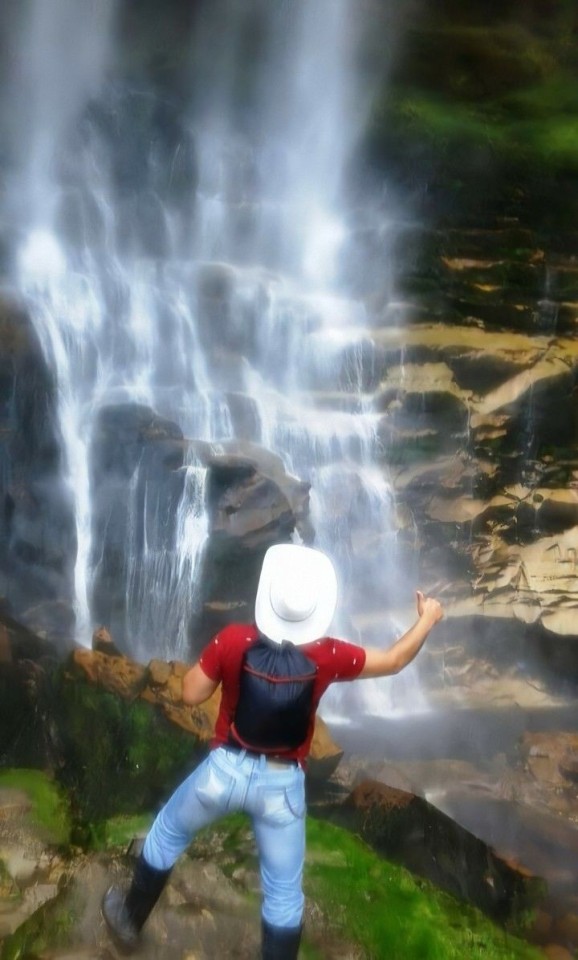#Gocta falls
Text
Chachapoyas and the way to Gocta Falls (4/?)

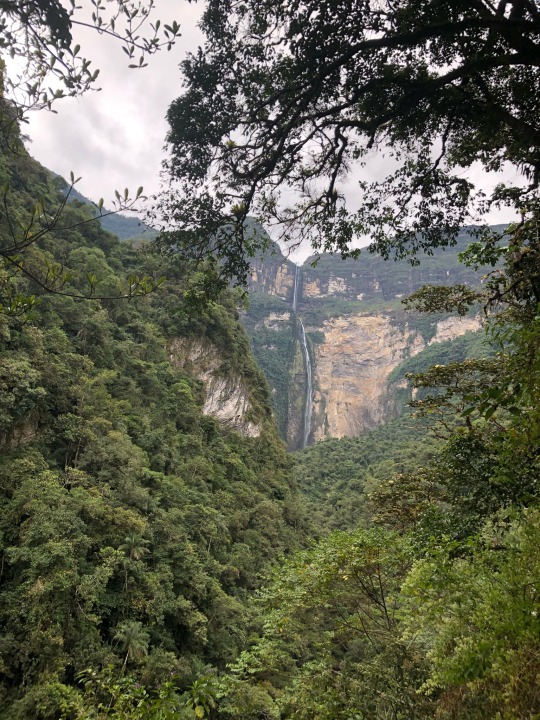



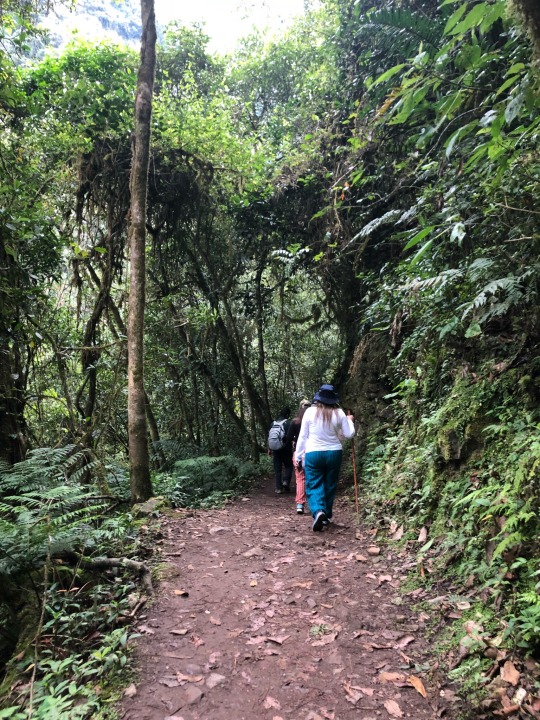

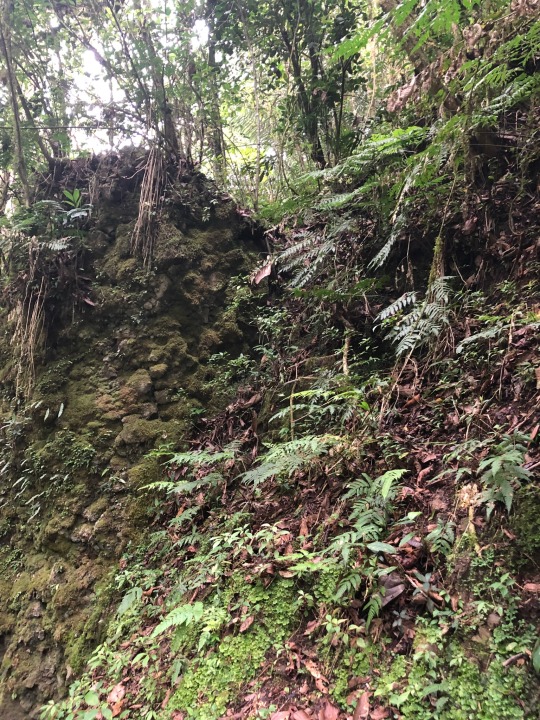
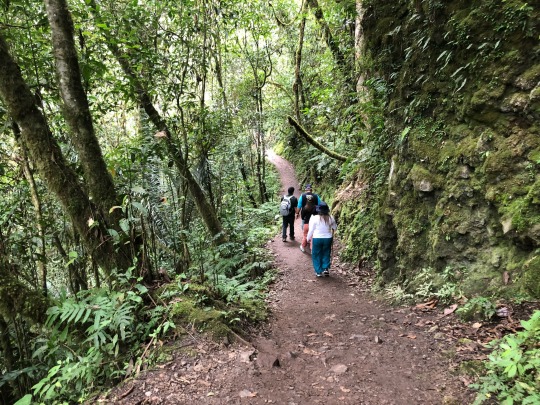
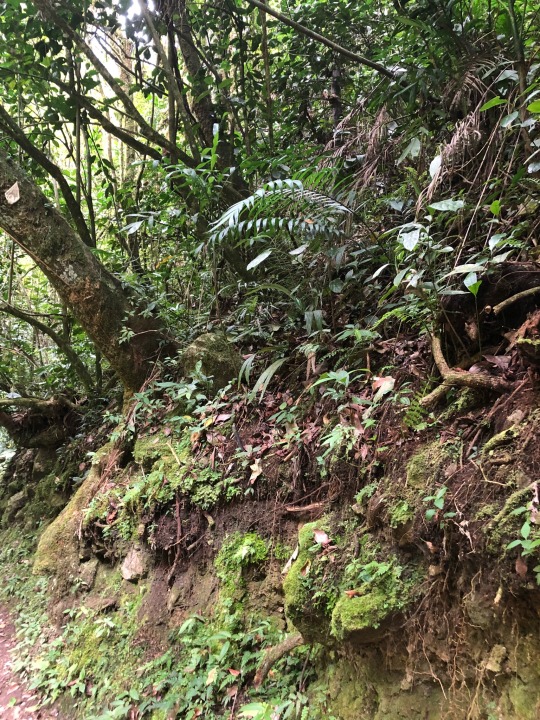
#photography#nofilter#photoset#photo#no filter#travel#mountains#mountainscape#mountain scenery#perú#amazonas#amazon#chachapoyas#gocta#Gocta falls#hiking#nature#green#waterfalls#naturescape
53 notes
·
View notes
Photo
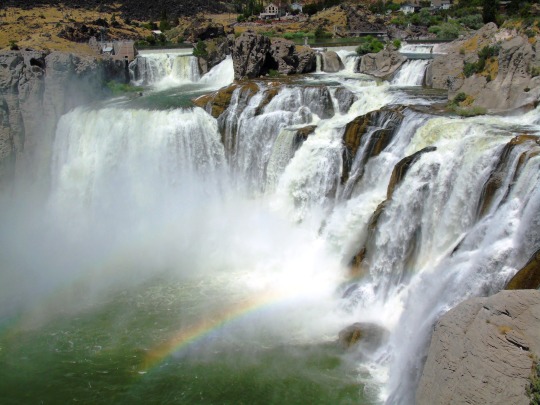

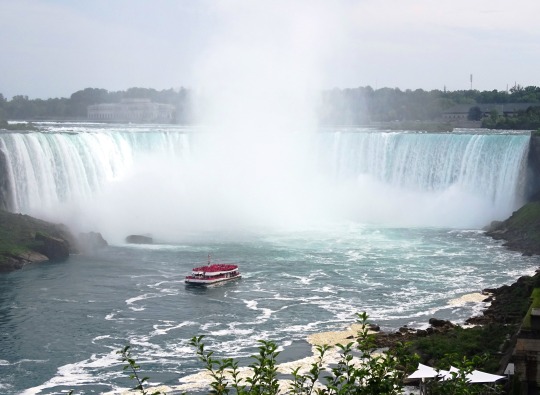


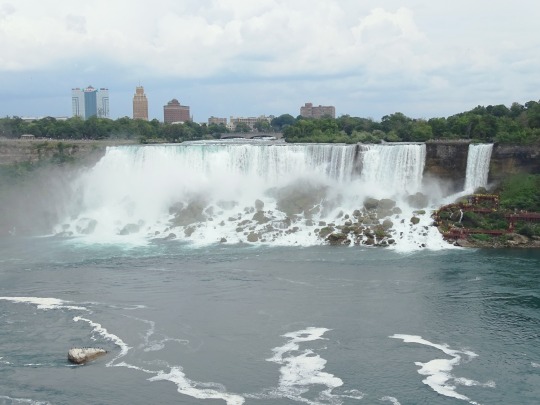
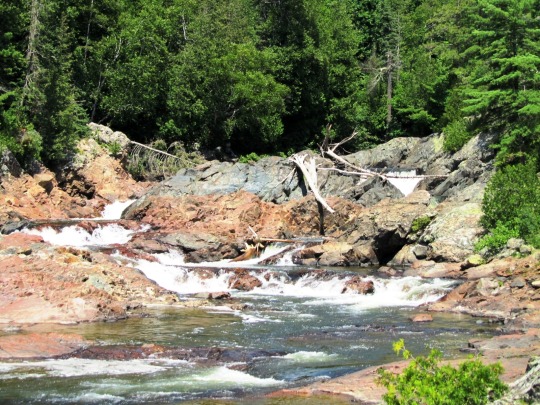


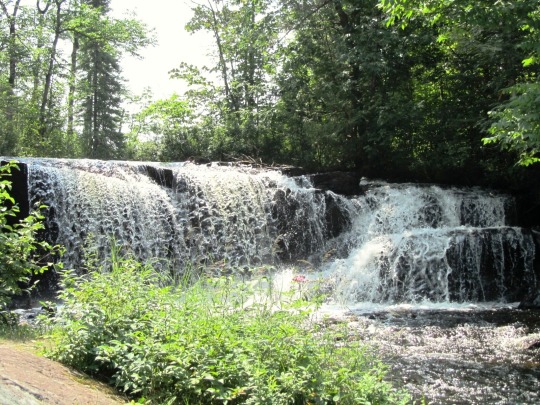
International WaterFall Day
International Waterfall Day is celebrated every year on June 16 to celebrate these magnificent and scenic beauties. Waterfalls are found all around the world and are incredibly important to the local communities living around them. The cascade of water is not just a wonder for the eyes but they also have a majestic quality to them that’s indescribable. Imagine trekking for miles, drenched in sweat and beaten down by the sun, only to finally walk through a clearing and look up at the sky to see what looks like water pouring from the heavens.
History of International WaterFall Day
A waterfall is usually defined as a point in a river where the water flows over a steep drop. As there are many types and methods used to classify waterfalls, what constitutes a waterfall continues to be debated. Despite being such an important part of human lives and history, waterfalls have not been very much researched, although Alexander von Humboldt did write about them in the 1820s. There is no name for the specific field of researching waterfalls but it is popular to describe studying waterfalls as ’waterfallology.’
European explorers used to document the waterfalls they came across. In 1493, Christopher Columbus wrote about Carbet Falls in Guadeloupe, which could be the first waterfall Europeans recorded seeing in the Americas. However, Geographer Brian J. Hudson suggests that it was uncommon to specifically name waterfalls until the 18th century.
This trend of, specifically, Europeans naming waterfalls is following people’s increased scientific focus on nature at the time, the rise of Romanticism, and the increased importance of hydropower due to the Industrial Revolution. However, European explorers would often ignore the names native peoples had originally given these waterfalls in favor of a more ’European’ name. For example, Scottish physician and explorer David Livingstone named Victoria Falls after Queen Victoria, even though it was already known as Mosi-oa-Tunya by the people native to the area.
Waterfall exploration continues to this day. Waterfalls are visited by people in droves mainly because they make great tourist sites; it is not just because they are beautiful, but also because they are relatively uncommon.
International WaterFall Day timeline
Late 1600sNiagara and Saint Anthony Falls
Belgian missionary Louis Hennepin visits North America and provides early descriptions of the Niagara Falls and Saint Anthony Falls.
1884“Waterfallology”
Geologist William Morris Davis, known as the "father of American geography," writes and publishes an early paper on waterfalls.
November 16, 1933Jimmy Angel Spots the Angel Falls
American aviator Jimmy Angel flies over the waterfall now known as Angel Falls, while on a flight searching for a valuable ore bed.
March 9, 2006The Exploration Continues
The Gocta Cataracts, a perennial waterfall with two drops located in Bongara, Peru, is first announced to the world.
International WaterFall Day FAQs
How do you survive falling over a waterfall?
Jumping off a waterfall is dangerous and can be fatal. However, if you find yourself in the unfortunate situation of tripping over one, these steps might help: Take a deep breath while you’re still in the air; go over the falls feet first and jump out and away from the edge; cover your head with your arms; start swimming as soon as you hit the water to avoid hitting the rocks at the bottom and continue downstream, away from the falls.
What are the most popular waterfalls?
Waterfalls found on all continents serve as popular tourist sites. Some of the famous ones in the world are Niagara Falls, Victoria Falls, Angel Falls, Yosemite Falls, Jog Falls, Iguazu Falls, and Sutherland Falls, among others.
How are waterfalls formed?
Waterfalls are formed when the riverbed suddenly changes from soft to hard rock. Rapids are created where a fast-flowing river cuts quickly downward through a bed of hard and soft rocks. The quicker erosion of the soft rock beneath the hard rock results in the hard rock to be elevated above the stream bed. Afterward, a vertical drop will eventually (after many, many years) begin to form as more of the soft rock gets eroded.
International WaterFall Day Activities
Visit a waterfall
Admire them from home
Explore exotic places
Fill up your car and drive to your nearest waterfall for a lovely day out. Make a picnic out of it by inviting your friends and family!
Appreciate the beauty of waterfalls from the comfort of your home by hanging their pictures around your house and watching tourism videos on YouTube. Post pictures on your social media to share these wondrous sites with your friends.
Visit other places if you can’t make a trip to a waterfall. Use this day as an opportunity to satisfy your wanderlust and appease the travel-hungry explorer in you!
5 Facts About Waterfalls That Will Blow Your Mind
Angel Falls is extremely tall
There are thousands of waterfalls worldwide
Niagara Falls is very clean
They can be loud
They can freeze over
Venezuela’s Angel Falls is the world's longest waterfall at 3,212 feet, with the water turning into mist before it hits the base of the waterfall.
There are still many waterfalls in the world that have yet to be recorded and named, leaving the list of waterfalls in the World Waterfall Database to be incomplete.
The water in Niagara Falls is so clean that it can even be used as drinking water.
The roar from the famous Victoria Falls in Zimbabwe is so loud that it can be heard from 25 miles away.
Some waterfalls freeze for at least part of the year, leaving mountaineers able to climb them to practice and test their skills.
Why We Love International WaterFall Day
They’re beautiful
They have religious significance
They’re important sources of power
Waterfalls are popular tourist sites for a reason. They’re beautiful and can have an amazing de-stressing and calming effect on you. Who wouldn’t want to visit a place like that?
People in different cultures also attach religious significance to waterfalls in their regions. ‘Misogi,’ which means ‘water cleansing’ in Japanese, is a popular Shinto practice in Japan where people stand under a waterfall to purify their souls.
Hydroelectricity can be generated from naturally existing waterfalls, although most hydroelectric plants generate water from man-made falls. They are made by building dams, thus restricting the natural flow of the river into channels where the water can power turbines.
Source
#Shoshone Falls#Bridal Veil Falls#Oregon#Idaho#Niagara Falls#Horseshoe Falls#American Falls#High Falls#Chippewa Falls#Seven Sisters#Norway#nature#landscape#countryside#cityscape#Canada#vacation#travel#tourist attraction#landmark#forest#flora#International WaterFall Day#16 June#InternationalWaterFallDay
4 notes
·
View notes
Video
youtube
We were lucky enough to witness how a flash flood transformed the Gocta Falls in northern Peru in seconds. It is truly unforgettable, the power of mother nature! (24 Jan 2020).
4 notes
·
View notes
Photo
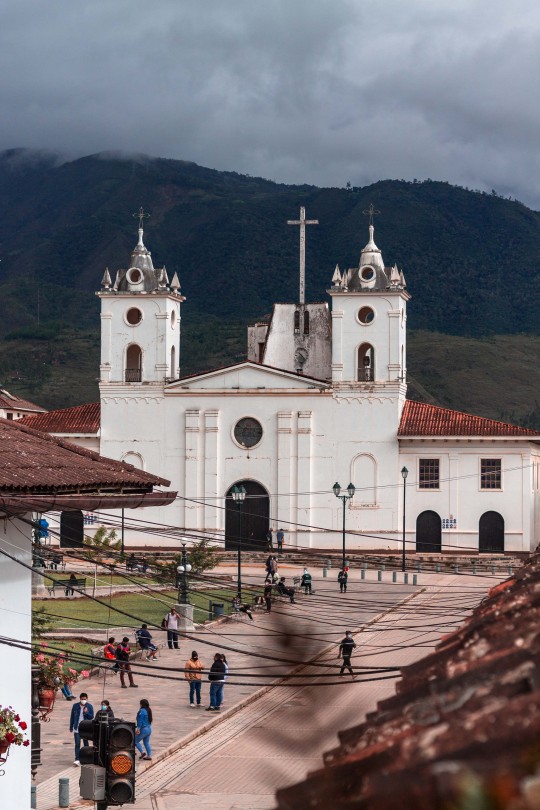
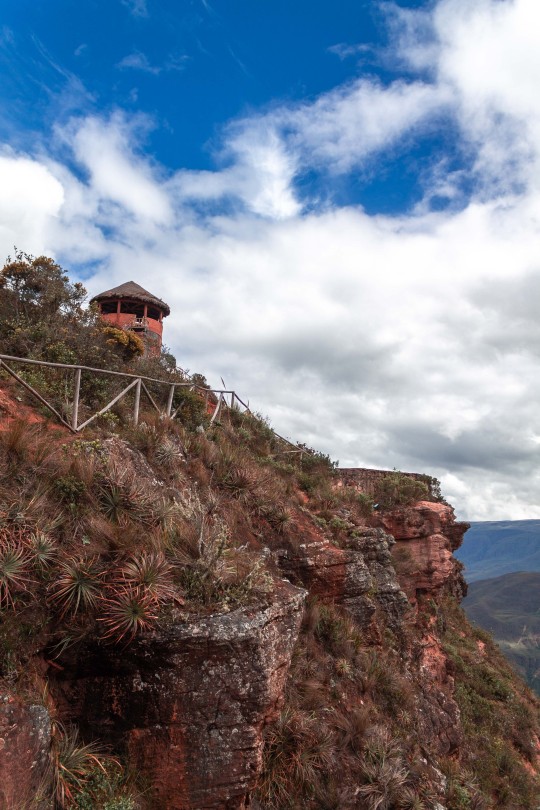

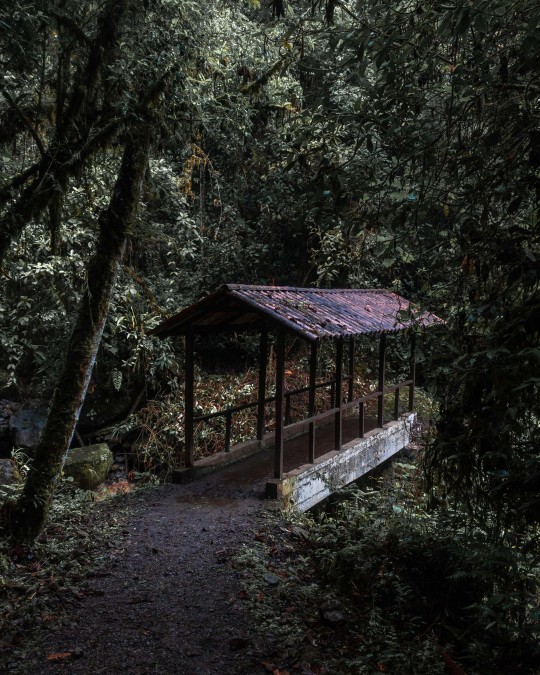
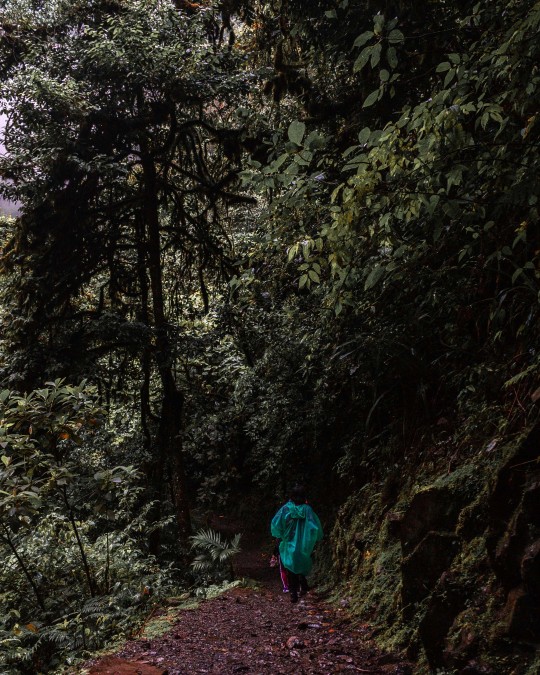
gocta 2021
#photography#landscape photography#landscape#canon#nature#peru#chachapoyas#jungle#selva#photoshop#gocta#fall
20 notes
·
View notes
Photo

14 notes
·
View notes
Photo

🔰.- Visit one of the world's tallest waterfalls on your trip to Peru! Learn all about the Gocta Waterfall, a breathtaking place where the Amazon Rainforest meets the Andes Mountains. . 📍Chachapoyas Amazon Peru 🇵🇪 . Follow 👉@tourleadersperu for more travel destination in #tourleadersperu . There is no bad time to visit the Gocta Waterfall, as it flows year-round. However, the recommended time to go is on the cusp of the rainy season and dry season, from April to June. As the rainy season comes to a close, the falls are still full and powerful, but the likelihood of getting rained on is less. . 📸: @chicawanderer . . . . . . . . . .____________________________________ #travelcommunity #explorenature #earthoutdoors #voyaged #visitperu #chachapoyas #gocta #naturelover #hiking #outdoorsaddict #landscapephoto #nature_lover #hiking #outdoorsaddict #landscapephoto #landscape_hunter #landscape #mountainrange #mountainhiking #mountainaddict #mountainculture #natureheals #earth_pix #earthvisuals #hiketheworld #earth_escape (at Kuelap & Gocta, Chachapoyas, Amazonas, PERÚ) https://www.instagram.com/p/CSFpTE-rtw_/?utm_medium=tumblr
#tourleadersperu#travelcommunity#explorenature#earthoutdoors#voyaged#visitperu#chachapoyas#gocta#naturelover#hiking#outdoorsaddict#landscapephoto#nature_lover#landscape_hunter#landscape#mountainrange#mountainhiking#mountainaddict#mountainculture#natureheals#earth_pix#earthvisuals#hiketheworld#earth_escape
2 notes
·
View notes
Text








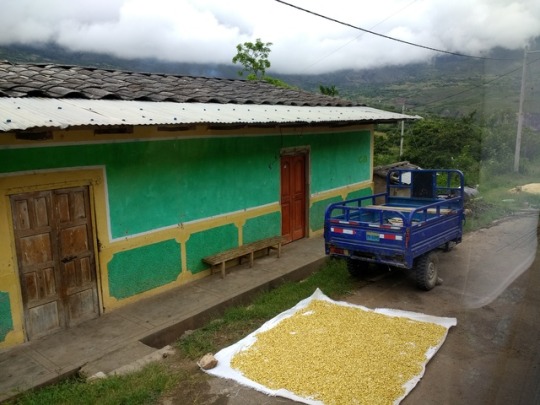

10 December – Chachapoyas
It was time to move on again, this time to the small city of Chachapoyas in the Amaszonas region. I had assumed that it was in jungle territory however it lies at around 2,300m, still in the Andes. I took an early morning tuk tuk for the 5am departure. The Rough Guide had informed me that it’s a stunning ride of climbing and descending mountains, much a single track road clinging to the edge of the cliffside. It also mentioned that plastic bags are handed out to passengers, since the number of twists and turns are not always appreciated by the stomachs of the locals!
It turned out to be a stunning ride and I was rewarded with decent weather for much of it. We enjoyed incredible views as the landscape and vegetation constantly changed; particularly beautiful were the cloud filled valleys below. At 7.30am we stopped at the bus company terminal in another town for breakfast, consisting of chicken broth, a bread roll and herbal tea. Then to the single carriageway road, where strangely our bus seemed to do more of the reversing into passing places as we met other vehicles, including cars. We were subjected to (but thankfully the volume was low) a movie, predictably a disaster film, this time a terrorist induced burning skyscraper and huge city fire. The constant shooting and terror didn’t exactly blend in with the view from the window!
As we climbed to the summit at 3,600m we encountered wind and rain, a road turning into a mudtrack and more evidence of mudslides or rockfalls. There were plenty of workmen in more problematic areas, clearing mud and rocks from the road, and I could understand why many routes here become impassable during the worst of the wet season, still to come. I was surprised not to see any alpaca or llama but there was plenty of cattle, pigs, sheep and chickens running around, including where we stopped at a lone hilltop restaurant for lunch. Seeing the cleanliness of the place and the owners (and not fully understanding the two dishes on offer) I stuck with my snacks!
A number of passengers were sleeping on the bus in spite of the constant horn sounding and swinging in the seat from left or right, as we negotiated each twist and turn. In spite of the roller coaster nature of the journey, I’m pleased to report no evidence of anyone needing a plastic (or paper) bag, in fact they weren’t even handed out.
We pulled into Chachapoyas nearly 12 hours later and I was more than ready to check-in to my hostal but no answer at the door! So I dumped my bags at a fire safety equipment shop opposite and head to the Plaza de Armas, got my dose of tourist info for my stay, and finally had my coffee. It turned out that the hostal owner misread my arrival time as AM rather than PM. The place wasn’t easy to find, no name by the door and not even a bell to ring. I was later to learn why...the owner hadn’t registered her business to avoid the legislation requirements for accommodation facilities and of course for tax avoidance purposes; pretty impressive for someone working in the local police force!!
By far the biggest memory I will take away from Chachapoyas is getting drenched and covered in mud! The first morning I awoke to rain (to be fair we are now at the start of the rainy season) for my tour to Kuelap, a hilltop fort at 3,000m dating from the 6th Century but developed much more between 900 and 1100. Inside the 20m high enclosure walls are the remains of around 500 circular homes and a handful of rectangular buildings including one built once the Incas had moved in. It’s incredible how much has survived to today, the buildings in different states of repair, with ongoing restoration work. The 5m high temple is in the form of an inverted cone, which was entered through a small hole in roof to access a wider chamber below, like a beer bottle.
Well, it was a truly memorable visit... Firstly the less than two years old 4km cable car is currently shut since the road serving it is closed for improvement works. So we took a dirt track to the other side of the fortress, from where we had to walk the last few kilometres. I had actually been keen to do a hike however the track was like a mudbath in places. In spite of being told that trainers would be fine I was very fortunate to have taken the decision to wear my hiking boots! Most others were however in trainers and it wasn’t long, after getting muddy wet feet and slipping and sliding all over the place, before they took advantage of the horseback service! I was determined to get in some hiking so continued on foot, bumping into another tour leader who invited me to join his group on the steeper but quicker short cut. I waited by the fort entrance for over an hour for the rest of my group to arrive, while other groups entered. We were lucky for the rain to ease off while exploring the site, but after sliding down a muddy path to our lunch spot, the heavy showers soon returned. Except for me, all opted for a return on horseback; I returned with the tour guide via the steep shorter path, sliding much of they way back down, aided by branches and other vegetation to cling to, and the guide’s hand to use as a brake. Amazingly I only ended up (front first) in the mud once!
The following day I visited the Catarata Gocta, with a drop of 771m, the third longest waterfall in the world, 200m shorter than Angel Falls in Venezuela. With the forecast of sunny spells (20% probability of rain) and waking up to a dry start, I was fairly optimistic about keeping dry. Little did I know what was to come! Other than leaving four hours later than the tourist office’s suggested hour of 6.30am, I got off to a good start, meeting a fellow Brit and a French lass as we boarded the minibus, with whom I shared a tuktuk up a windy 5km dirt track to San Pablo. After signing in, paying the entrance fee and providing our fingerprints, we set off among pretty colourful homes, lush tropical vegetation, and colourful flowers and butterflies. I was soon wondering if I should apply suncream but decided to hold off.
A light shower welcomed us to the viewpoint of the upper tier (215m) of the falls, from where we were wowed by the scale and power of the fall, and soaked by the spray. At this point I realised that my that my desire to take a swim may have been a tad optimistic, with no sign of any relatively calm pools. We then took a steep path down towards the lower section of the fall (much longer at over 500m), during which the rain got heavier and heavier, and I kept alternating between steamed up wet specs and no specs at all, neither ideal for the low light and slippery nature of the path. We eventually got to the river below, saturated to the skin (in spite of the waterproofs), and (partly since it was getting late) had no appetite for a diversion to the viewport of the lower fall. This turned out to be a very wise decision since the remaining couple of hours was mainly uphill, rather than our expected downstream descent. We were struggling a little by the end of it so we’re very happy to arrive in Cocachimba, grab an Inka Cola and snack, and find a direct minibus to Chachapoyas about to leave, so no tuktuk descent and hanging around on the main road to flag down a bus.
The rest of my time in Chachapoyas was spent keeping dry and warm with local coffee; often walking on the road (to the dismay of some drivers) to avoid negotiating the ridiculously uncomfortable stepped pavements that lined the steep streets; attempting to take photos of the two pretty main squares (both sealed off for improvement works to be (nearly) completed in time for the recent local elections), and meeting some local guys but without much of a flowing conversation.
1 note
·
View note
Text
The Atlas Obscura Explorer's Guide for the World's Most Adventurous Kid
After the success of their book about the world's most unusual places, Atlas Obscura is following up with an illustrated book aimed at kids showcasing "150 of the world's most mesmerizing and mysterious wonders": The Atlas Obscura Explorer's Guide for the World's Most Adventurous Kid.
Travel the world through common points of interest, from strange skeletons (Trunyan Tree cemetery in Indonesia leads you to India's Skeleton Lake, for example) to wild waterfalls (while in Peru visit the Gocta Waterfall -- and then move on to Antarctica's Blood Falls) to ice caves to bioluminescence.
The book comes out in September but you can preorder it here. The first Atlas Obscura book was my son's favorite for several months...he must have read it 8 times cover-to-cover. (via @kathrynyu)
1 note
·
View note
Text
Waterfalls
Angel Falls, Venezuela
Assaranca Waterfall, Ireland
Baatara Gorge Falls, Tannourine, Lebanon
Ban Gioc-Detian Falls, Vietnam
Bigar Waterfall, Romania
Benang Kelambu Waterfall, Indonesia
Blue Water Waterfalls, Mexico
Aysgarth Waterfalls, England
Inga Falls, Democratic Republic of the Congo
Gocta Falls, Peru
Grotto Falls, Tennessee
Niagara Falls,…

View On WordPress
0 notes
Photo
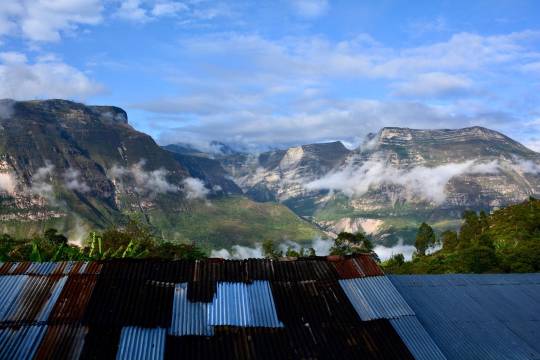
“Discovering” Gocta Falls in Peru — Five years ago on a year long road trip
0 notes
Text
Chachapoyas and the way to Gocta Falls (5/?)


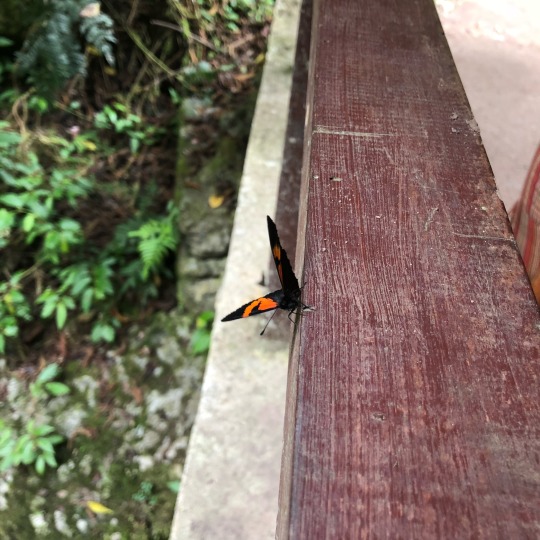

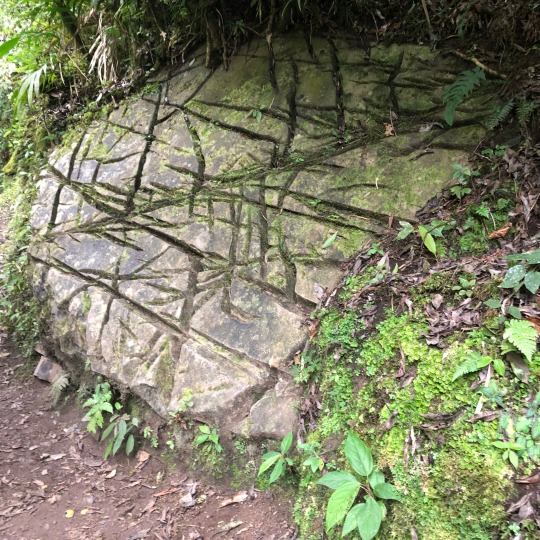

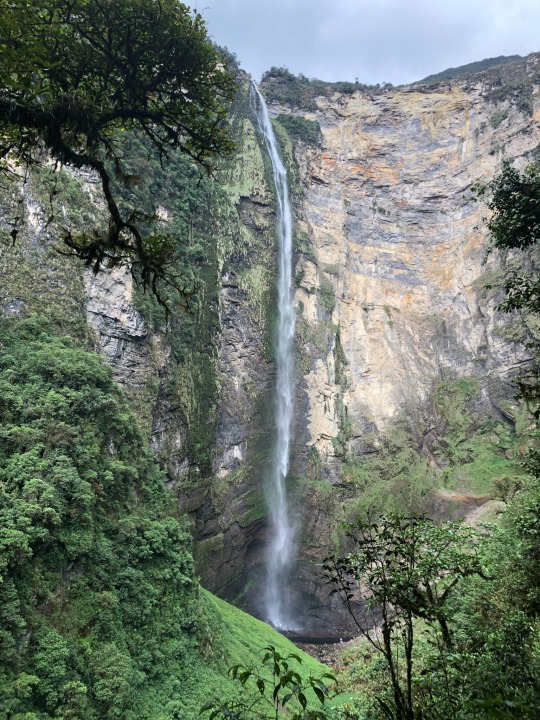
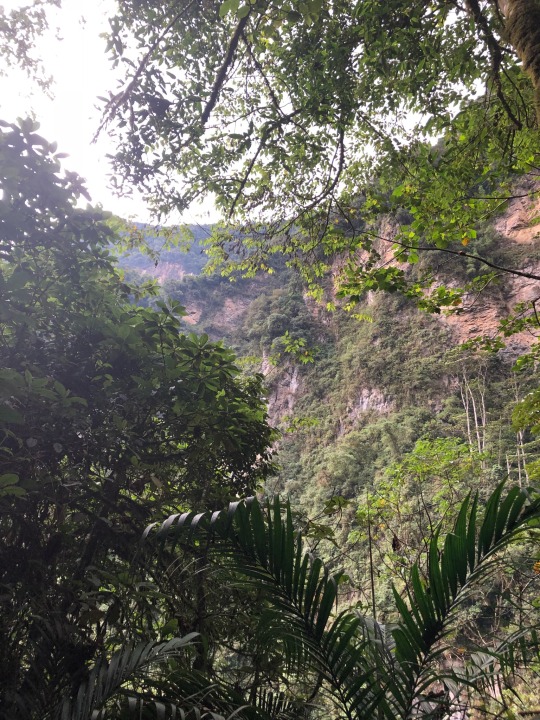

#photography#nofilter#photoset#photo#no filter#travel#mountains#mountainscape#mountain scenery#perú#amazonas#amazon#chachapoyas#gocta#Gocta falls#waterfalls#naturescape#nature#forest#green#butterfly#rocks
5 notes
·
View notes
Photo

“Discovering” Gocta Falls in Peru — Five years ago on a year long road trip
0 notes
Photo

Catarata de Gocta, Amazonas Gracias a @kevinjbd . Para ser destacado en nuestra Galería Fotográfica: . - Síguenos en @RuteandoPeru. . - Usa el Hashtag #ruteandoperu. . ---------------------------------------------- . Dale Like en: www.facebook.com/RuteandoPeru . ---------------------------------------------- . #peru #viajes #fotos #rutas #amazonas #gocta #falls #catarata #aventura #adventure #chachapoyas (at Cataratas de Gocta, Chachapoyas)
0 notes
Photo

Gocta Falls 🍂 #Gocta #falls #backpacker #trek #trekking #takemeback #Perú #peruvian #traveler #trip #wanderlust
1 note
·
View note
Text
20 of the world’s best waterfalls: readers’ tips | Travel
Winning tip: Cola de Caballo, Pyrenees, Spain
The aptly named Cola de Caballo (horsetail) cascade is the most spectacular of the many along the Arazas River in the Spanish Pyrenean Ordesa national park. Taking the GR11 upstream from the park’s entrance, a three-hour hike takes you past increasingly dramatic falls. Another kilometre beyond the Cola is the beautifully isolated Góriz mountain refuge hut, where you can enjoy some of Europe’s most unpolluted night skies. The backdrop is the brooding grandeur of Monte Perdido (Lost Mountain) looking down from its 3,300-metre peak, and often you can see giant lammergeiers (also called bearded vultures) circling. To the north, across the French border is Gavarnie, another magnificent waterfall.
Alan
Aquafraggia Falls, Lombardy, Italy
Photograph: Francesco Bergamaschi/Getty Images
A couple of weeks ago we went to the Notte delle Cascate festival which sprawls around the foot of the Acquafraggia Falls in the Val Bregaglia near Chiavenna. We sampled local food and wine as we wandered ever closer to the base of the dramatic falls – two tiers and twin streams dropping 130 metres off the valley wall – and found a good viewpoint to spread our blanket on the grass, and wait. There were river pools for kids to play in and lots of pop-up bars for refreshments. All this is the build up to the exciting climax: at 10pm a squad of abseilers, their bodies outlined with lights, slowly descend the falls in the dark. Magical.
Martha
Grawa, Austria
Photograph: Getty Images
The Grawa waterfall is on the Wild Water Trail in the Stubai Valley. We travelled there by bus using the Stubai Super Card. Our walking group were the only ones there on a damp, misty morning. The 85-metre-wide waterfall wasn’t even in full flow but it was an awesome, thundering spectacle. When we revisited the next day, it was transformed: a bright, sunny afternoon had framed the waterfall with blue sky and green trees and brought many people out to enjoy the show from the wooden platform and seating.
Liz Young
Svartifoss, Iceland
Photograph: Getty Images
One of my most amazing experiences ever was to see the mystical Svartifoss waterfall in Iceland, in the south of Vatnajökull national park. Although this is not the biggest of the Icelandic “fosses”, the magic of the place was palpable. Magnificent octagonal basalt columns that surround Svatrifoss add something special. In the dying light of winter sun, the icy glow of falling glacier water was radiating extraordinary power. The hike to Svartifoss from the visitor centre in Skaftafell takes about 45 minutes each way. Every time I think about Svartifoss, my heart is filled with wonder.
Rod L
Every week we ask our readers for recommendations from their travels. A selection of tips will be featured online and may appear in print, and the best entry each week (as chosen by Tom Hall of Lonely Planet) wins a £200 voucher from hotels.com. To enter the latest competition visit the readers’ tips homepage
Søtefossen, Norway
Photograph: Getty Images
If, like me, you’re obsessed with waterfalls, Norway is the promised land. No other country gives more bang for your buck. Unfortunately many of Norway’s cataracts are harnessed for the country’s huge hydroelectric industry. But a hike up the Kinso River bags you four of its finest unharnessed falls culminating in Søtefossen, a giant double leap down the headwall of the Husedalen. You start in Kinsarvik: there’s a bus stop in the village and a car park at the trailhead a few kilometres up the valley. The trail climbs 666 metres, it’s strenuous but the payoff is extraordinary.
Michael
Glen Maye, Isle of Man
Photograph: Mark Wallace/Alamy
A small but powerful force, Glen Maye waterfall in the Isle of Man plungesthrough a dramatic, intensely green gorge sheltered by mature woods and clothed in moss, ferns and trailing plants saturated by the river’s breath. When the river is not in full spate, the pool is an unforgettable place to swim – deep, wild, clear and exhilaratingly cold. A spirit of Manx folklore – the Cabbyl-Ushtey (Water Horse) – is said to dwell here. Glen Maye is a 10-minute drive from the western town of Peel. There’s a car park above the glen, from which you can follow the river down through the trees to the beach for a picnic.
Elizabeth
Cora Linn, South Lanarkshire
Photograph: Peter Devlin/Alamy
The most magical place in Central Scotland is the Cora Linn at the Falls of Clyde after a heavy rainfall. It can be reached by walking from the historic town of New Lanark via a well-maintained woodland pathway alongside the river where badgers and otters make their home. The falls have impressed and inspired poets and writers for centuries, including Wordsworth, Coleridge, and JMW Turner. The feeling of being miles from anywhere while being midway between Scotland’s major cities is sensational. And when you catch your first sight of the falls the feeling is glorious.
Moira
Mill and Whitfield Gill Force, Wensleydale, Yorkshire
Mill Gill Force. Photograph: Mike Kipling Photography/Alamy
Picturesque Askrigg in Wensleydale offers an enchanting five-mile round-trip to two fabulous but unheralded waterfalls, Mill Gill Force and Whitfield Gill Force. Park outside the church (free) and walk through backstreets and then meadows before meeting Mill Gill Beck in its wooded glade. You’ll soon be following the whooshing of the falls, descending to the first in a cavernous gully shrouded by cliffs and trees. Keep going to the even more spectacular Whitfield, before ascending out of the glen and taking a moorland track back to Askrigg, with commanding views over the dale. Refresh at the ancient and atmospheric King’s Arms, with its excellent food, ales, and friendly staff.
Daniel Ashman
Baatara Gorge waterfall, Lebanon
Photograph: Alamy
The Cave of Three Bridges near Tannourine village (a 90-minute drive from Beirut) is a primordial wonder. A vertical shaft of icy melt water drops 250 metres through a limestone cave. Over the centuries the water has carved three limestone arcs across the main chamber at the end of a dizzyingly steep gorge. The curved nature of the erosion and abundance of greenery give the impression of an imagined landscape, a sublime rendering of the natural world. The Baatara Gorge can be accessed by trail from the village of Mgharet al-Ghaouaghir and offers an insight into the incredible geology of this tiny, troubled country.
Gareth Roberts
Gocta Waterfall, Peru
Photograph: Getty Images
It is well worth the trek to get to this astonishing waterfall. In cloud forest at the edge of the Amazon, in the Chachapoyas region, it is the most beautiful waterfall I’ve ever seen. Locals will tell you it’s the third-highest waterfall in the world (at 771 metres) although experts dispute this because it falls in two drops and it’s rated by the World Waterfall Database as 16th-highest in the world. Whatever its standing, it’s worth the 6km trek, which takes about four hours. The route is generally well-signposted, if a little rugged in parts. It’s also free, unless you want to take up the option of hiring a horse and a guide.
Tim Evans
Moconá Falls, Misiones, Argentina
Photograph: Francois-Olivier Dommergues/Alamy
These falls on the Uruguay River dividing Brazil and Argentina are often overlooked by travellers seeking the undoubted majesty of its big brother, Iguazu, 300km away. We visited Moconá Falls when staying at Don Enrique Lodge, about 50km from the falls, after a tip from our hosts. A 4WD taxi down miles of dirt tracks followed by an hour’s rib-boat trip took us to the 3km-long falls. Uniquely, the falls run the length of the river and although only about 20 metres high, they are breathtaking. Moconá translates in the Guarani language as “to swallow everything”, an entirely justified description. Not easy to reach but an unforgettable experience. Also known as the Yucumã Falls, this incredible sight can also be viewed from the Brazilian side.
Paul Hammond
Snoqualmie, Washington State, US
Photograph: Getty Images
This is the 82-metre waterfall (about 30 metres taller than Niagara Falls) made famous internationally in the 1990s TV series Twin Peaks. One of the great things, beyond the sheer force of its visual splendour, is that Snoqualmie is accessible by public bus services from downtown Seattle (30 miles) for a few dollars, so you don’t need a hire car to get there. It’s less than a mile woodland hike to the base of the falls from the top (and there are other hikes there too).
David Chalton
Sunwapta Falls, Jasper national park, Canada
Photograph: laurenepbath/Getty Images
This is a perfect stopover when driving on the Icefields Parkway. The 18-metre Upper Falls are easily accessed from the car park. The cascading water, partly fed by the Athabasca Glacier, is immensely powerful in spring and early summer when meltwater volumes are at peak. Walk to the centre of the high wooden footbridge that spans the gorge to appreciate the picture-perfect sight of the towering mountains in the background, and the picturesque island of trees just before the falls. Rushing water curves dramatically around both sides of the island. Sunwapta means “turbulent river” in the Stoney First Nation people’s language. A mile’s hike leads you through forest to the Lower Falls. Watch out for bears.
Victoria
Kalandula Falls, Angola
Photograph: Alamy
Angola is home to one of Africa’s biggest waterfalls, the Kalendula Falls, boasting an impressive width of 410 metres and a drop of 105 metres. The thundering noise, mist and setting are overwhelming. The best way to experience the falls is by hire car from Luanda, a six-hour drive on fairly rudimentary roads through varied landscapes. Alternatively, travel by train to the regional capital, Malanje, and then drive north for an hour via Lombe and Calandula. Stay at the charming Pousada Calandula (doubles from about £150). The six rooms have incredible views (and the noise) of the waterfall. The falls are best enjoyed from the B&B’s veranda with its bar.
Line Nyhagen
Ngare Ndare, Kenya
Photograph: Martin Mwaura/Alamy
Hidden in the middle of a small, community-managed forest reserve in central Kenya, Ngare Ndare is an impossibly pretty set of waterfalls perfect for swimming in. Four amazingly clear pools stretch a kilometre from a cerulean-blue pool fed by melting ice from the slopes of nearby Mount Kenya, past a couple of smaller, steeper pools with myriad jumping opportunities for adrenalin junkies, ending with the largest fall and best swimming spot. It’s a cool 4km hike through shady forest from the main gate. Take a guide – we came across elephants.
Clare
Tappiya Falls, Philippines
Photograph: Getty Images
In a valley of the Cordillera mountains, the journey to the Tappiyal Falls involves making your way to the small village of Batad, among the Ifuago rice terraces, a Unesco world heritage site (390km north of Manila). Hiring a local guide costs between £8 and £16 to take you on a trek along the luscious green terraces carving along mountains before a 30-minute descent to the falls. Here, the water plummets 30 metres to a huge, refreshing pool to swim in and wash off the sweat from the hike. Tappiya’s beauty isn’t solely in the falls (stunning as they are), but the journey to get there: to the remote village, the phenomenal terraces, and the tricky descent.
Laurence Britton
Nachi, Japan
Photograph: Sean Pavone/Getty Images
The Kumano Kodo pilgrim trail is actually a collection of routes 100km or so south of Osaka. They are among the best and most well-organised of Japanese hikes with wonderful traditional Japanese accommodation and food on route. The gem at the end of the Nakahechi route is the Nachi Falls which, with a drop of 133 metres, is Japan’s most spectacular cascade. Full details from the Kumano Travel Centre.
John Thackray
Khe Kem, Vietnam
Photograph: Son Viet
Take a rented moped (about £7) from Con Cuông in the North Central Coast region on a meandering 20km ride through chiseled mountains, alongside rural villages to access the graceful Khe Kem waterfall. |For a £1 entry fee, visitors get access to paths with bamboo rails that guide through the undergrowth towards the foot of the cascade, where a serene pool is surrounded by natural sun-baked stone loungers. Swim directly under the flowing torrent while having your feet gently nibbled by some of Pu Mat park’s fish population. If you’re lucky, as we were, an invitation to join a picnicking local family and share in food, beers and cheers might cap this magnificent experience.
Belly
Weeping Wall, Hawaii
Waialeale crater with many waterfalls and green cliffs in Kauai, Hawaii, USA. Photograph: Getty Images
If you take one helicopter trip in your lifetime, let it be around Hawaiian island Kauai. Not only will you feel transported to the opening scene of Jurassic Park, but in one sweep you will see some of the most astonishing and remote landscapes on Earth from an unforgettable vantage. The Waimea Canyon, the towering cliffs of the Nā Pali coastline, the horseshoe reef of Tunnels beach, and the Weeping Wall. Scores of rivulets thousands of feet high fall like tears directly from the misty sky. Set against the emerald background of shield volcano Mount Waialeale: a towering physical beauty from an earlier geological age, this is one of the most astounding sights on the planet. Hiking to the falls is only feasible for experienced adventurers.
Sarah croudace
Whangarei Falls, North Island, New Zealand
Photograph: Chandrasekhar Velayudhan/Getty Images
There are bigger, splashier more dramatic Kiwi waterfalls but few are as photogenic as Whangarei Falls. The spectacular 27-metre drop down a basalt cliff is set in a wooded valley. There’s a wonderful loop walk around the falls among the 500-year-old native flora and fauna. The three viewing platforms, picnic spots and well-maintained paths are balanced with the sheer beauty of the place. It’s easily accessible, a 10-minute drive out of Whangarei, with plenty of free parking and toilets. Walks to the falls from the car parks range from 15 minutes to 1.5 hours. Perfect for a picnic and exploring.
Phil Lines
Looking for a holiday with a difference? Browse Guardian Holidays to see a range of fantastic trips
The post 20 of the world’s best waterfalls: readers’ tips | Travel appeared first on Tripstations.
from Tripstations https://ift.tt/2yrvEht
via IFTTT
0 notes
